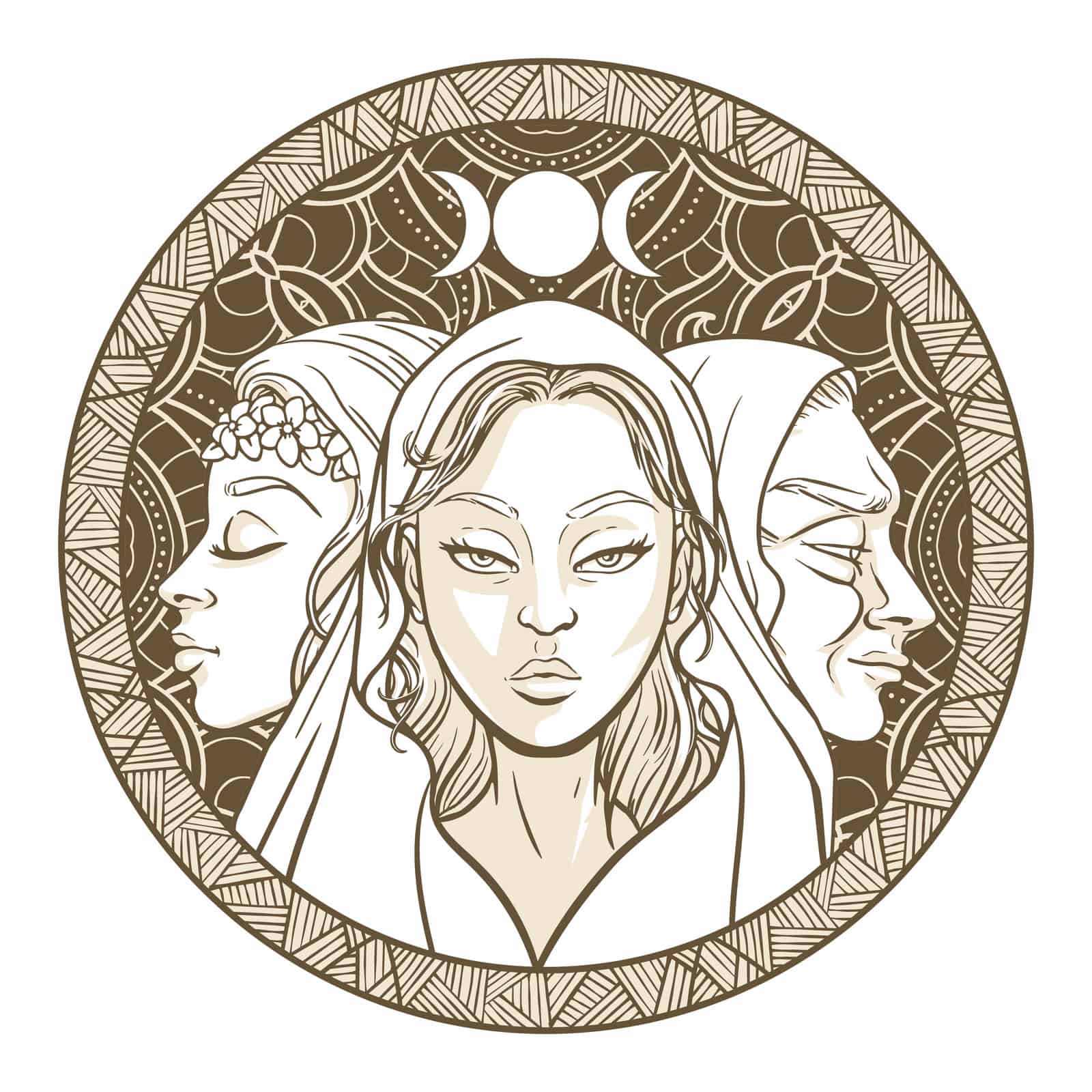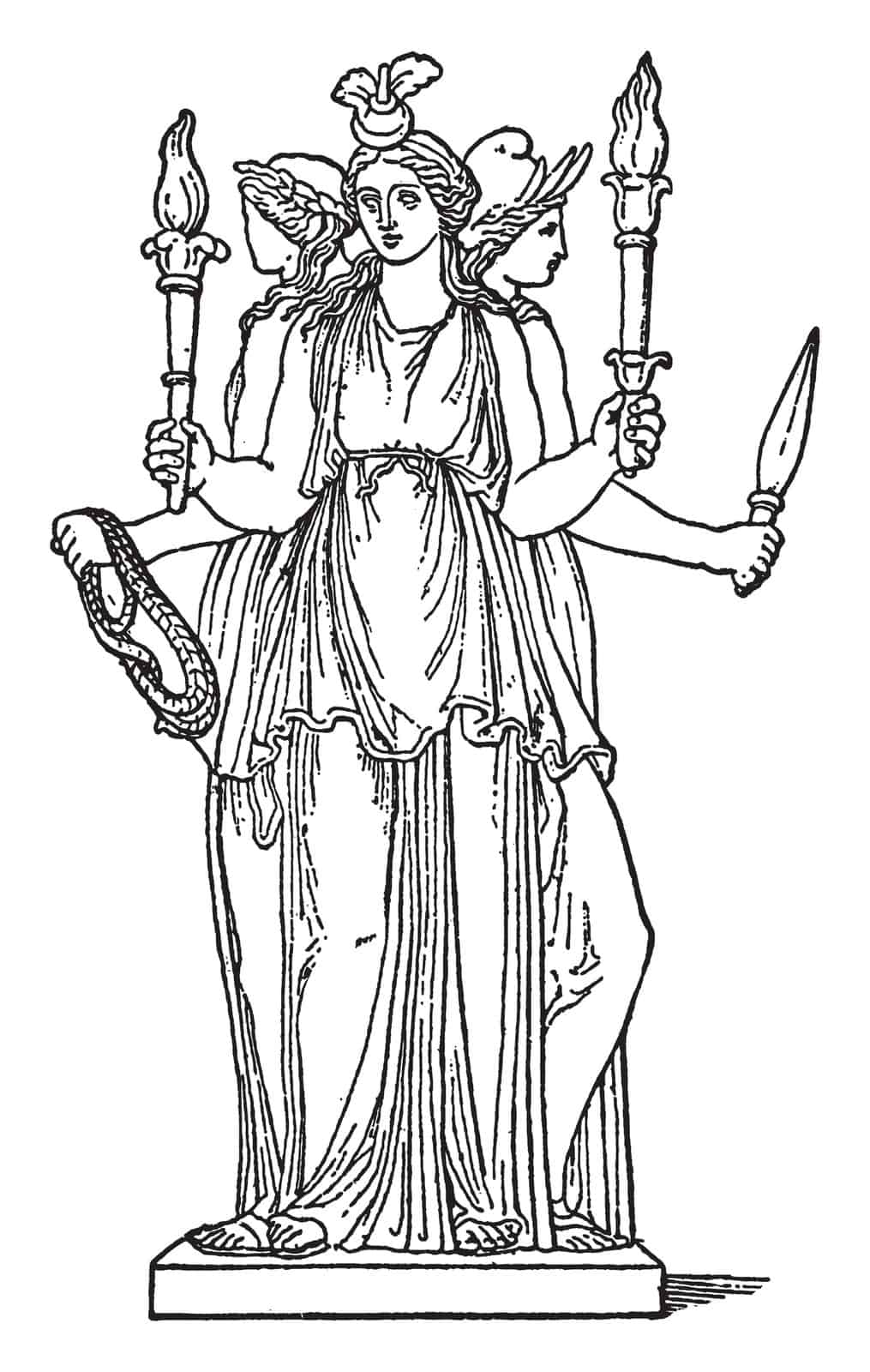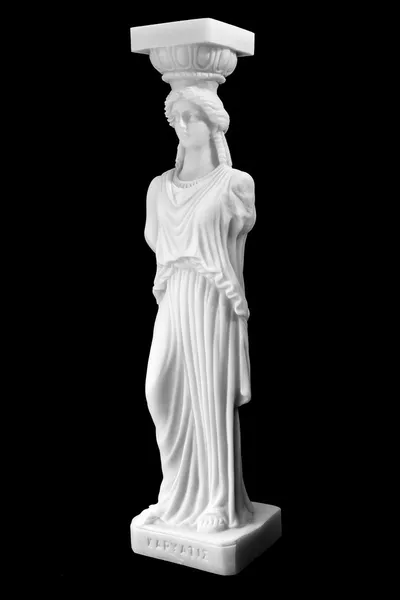
10 Great Facts about Goddess Hecate
Goddess Hecate
She was the daughter of the Titan Perses and the nymph Asteria. She was the ruler of crossroads, entrances, nighttime, light, magic (witchcraft and sorcery), herbs and plants,
Ghosts and ghouls, and necromancy.
Her main jobs were to control boundaries, witchcraft, and the Underworld.
As a protector of the Oikos (home), like Zeus, Hestia, Hermes, and Apollo, the goddess is usually shown holding a set of keys or torches, which she is said to have used to help or stop people from entering cities and homes.
- She was a goddess in charge of magic, witchcraft, and much more. Her tasks went beyond the heavens, the earth, the seas, and the Underworld.
- Hecate was the principal goddess who had jurisdiction over enchantments and spells. She was there when Demeter’s daughter Persephone was taken to the Underworld, and she helped search for her with a torch in her hand after she saw it happen. In this manner, pillars known as Hecate stood at key intersections and entryways, possibly to ward off malevolent spirits.
- She was a goddess in charge of magic, witchcraft, and much more. Her tasks went beyond the heavens, the earth, the seas, and the Underworld.
The goddess Hecate is one of the Greek goddesses that not many people know about. She was the only Titan who kept her power while Zeus was in charge. She was the daughter of Perses and Asteria.
Table of Contents
Goddess Hecate in Greek mythology

- Hecate (also spelled Hekate) is a goddess capable of both good and evil.
- She was connected to occult practices such as witchcraft and magic, the Moon, gateways, and nocturnal beasts such as hellhounds and ghosts.
Most likely, the cults of Thessalian Pherai (Pherae) and Eleusis saw Hekate as Chthonian (Underworld) Hermes’s wife. Eleusis was in Greece, which is where it is now.
Both of these gods were thought to be in charge of the dead and had something to do with Persephone coming back in the spring.
- Hecate (Hekate) is the goddess of boundaries and guardian of crossroads; she is often shown with three faces and carrying a torch to show her connection to the night.
Even though there aren’t many myths about the goddess Hecate, the ones that do exist tell us a lot about where she has power.
- During the Romans, many of her traits belonged to the world of the dead. Still, she was in charge of things that put her in the spotlight. The goddess had a lot of powers, some of which were later taken over by other gods.
- Hecate could give her worshipers wealth and blessings, but she could also take them away if they didn’t worship her well enough.
Who Goddess Hecate was and what she stood for.
How the GoddessHecate Came to Be
Classical scholars have differing views about where the worship of Hecate in Ancient Greece came from.
Many people think that worshipping the goddess began before the Greeks, while others think it started in Thrace.
The most popular theory is that the Carians in Asia Minor brought Hecate to Greece, where she became a part of their religion.
Scholars think that the goddess arrived in Greece during the Archaic period. There are cult sites for the goddess Hecate in Caria, which shows that people there worshipped her.
The one in Lagina stood out the most. But because these Anatolian cult sites were built later, other classicists say that the goddess could not have come from Anatolia.
Genealogy
Hecate is the daughter of Perses and Asteria. This makes her the granddaughter of Phoebe and Coeus, both Titans.
On the other hand, Euripides says that Leto is her mother. Some authors say that she was the daughter of Zeus and Demeter. They call her Aristaion or Night. The goddess was often linked to Demeter, and in some cults, she was seen as the same as Demeter.
The goddess told Demeter everything she had heard, but Demeter didn’t know who had taken her daughter.
Hecate hugged the girl when Persephone was reunited with her mother, Demeter. She would go with Persephone to the Underworld every year when the girl returned to Hades.
Hecate carrying a torch is a common way to show this myth in art.
Hecate first appears in Hesiod’s Theogony, written in the 7th century BCE. Hesiod only talks about her family and how she killed Clytius in the Gigantomachy.
But she isn’t in the Homeric epics, which is a big deal.
Relationships and Customs
Since the 5th century BCE, the goddess has been linked to the darker parts of life, like death, witchcraft, magic, the Moon, dreams, fierce hounds, and creatures that roam the night.
Hecate helps or protects warriors, athletes, hunters, horsemen, herders, shepherds, fishermen, and children.
Her friends are the Erinyes, winged creatures that punish bad behaviour, and her children are the Empusae, female demons that like to seduce travelers.
In the Greek religion, strange rituals were done to honour the goddess.
One of these was the “supper of Hecate,” where food was left at crossroads, road junctions, and any other kind of boundary or threshold. Small cakes made of eggs, cheese, bread, and dog meat were lit with tiny torches.
Another option was a dish of red mullet, which was usually not allowed to be given to other gods.
Hecate was also offered dogs, especially puppies, as a sacrifice. People used to believe that dogs would eat the dead if they weren’t buried.
Dogs also howl at the Moon, so this could be a link.
The Egyptian god Anubis, who led souls to the Underworld, may also have something to do with dogs. The Greek three-headed hound of Hades, Cerberus, may have been an earlier version of Hecate.
The goddess was given gifts every month on the night of a new moon. Sorceresses ask the goddess for help with their magic and spells, and she is shown on curse tablets that have survived.
Pausanias, a Greek traveller who lived in the second century CE, said that the goddess had a mystery cult on the island of Aegina, where people with mental illness thought they could be cured.
The goddess was also worshipped in Kos, Erythrai, Samothrace, Thessaly, and Miletos. In the 6th century BCE, a circular altar was built in Miletos to honour the goddess (the earliest archaeological evidence of her worship).
During the Hellenistic and Roman times, people still worshipped Hecate. Archaeologists have found essential offerings to the goddess at Lagina in Caria and Phrygia.
Art and Hecate
- Hecate doesn’t often appear in Greek art and writing until the 5th century BCE. Before that, she was just a minor character in the stories of Demeter (Persephone’s maid) and Artemis.
This could mean that the goddess didn’t come to Greece from Caria until a relatively late date. However,
- The ancient Greeks thought of her as a Greek goddess, not someone from another country.
- On Greek pottery, she is usually shown as a young woman holding a torch or a key. This is a reminder of her role as a goddess of the night, a guardian of the gates to Hades, and a goddess of boundaries.
- On an Attic vase from the 5th century BCE, a woman is shown giving a goddess a puppy and a basket of cakes.
- In sculptures from the Classical and Hellenistic periods, she looks most striking when she has three bodies and three heads, one body with three heads, or three bodies and one head.
Her halos are usually made of moonbeams. The heads could be of a dog, a lion, or a horse, representing the constellations that make up the year.
The goddess, on the other hand, usually has human heads.
The first example of the triple-Hecate form, called hekataia, was made by the sculptor Alcamenes in the 5th century BCE.
A statue called Hekate Epipyrgidia (On the Ramparts) stood at the Athens Acropolis entrance. On the Pergamon Altar of Zeus, from the 2nd century BCE, a three-headed Hecate and a dog attack a snake-like giant.
People often put pictures of the triple goddess on city walls, especially at city gates, the entrances to sacred sites, and the doorways of private homes.
They thought she would protect them and keep away evil spirits. Lastly, the goddess is mentioned in the tragedies of Euripides and Sophocles, among others. She guides Sibyl through the Underworld in Virgil’s Aeneid.
What animal is most important to Hecate?
The dog
As was already said, the dog was Goddess Hecate’s most holy animal. Apollonius of Rhodes says that the sound of dogs barking from the Underworld can be heard when Hecate is nearby.
Authors from the past, like Ovid and Pausanias, say that dogs, especially black dogs, were given to the goddess as sacrifices.
Hecate is known to rule over the sky, the earth, and the sea. She is also known as Soteria (Savior), the Mother of Angels, and the Cosmic World. She is not a typical one-dimensional goddess but lives on many different levels.
Persephone had a friend named Hecate.
Hecate became Persephone’s guardian and close friend while she was living in the Underworld. Persephone was married to Hades and was the queen of the Underworld.
Goddess Hecate’s Divine Duties
- In Ancient Greek religion, Hecate had a wide range of godly tasks. She was most famously the goddess of magic, witchcraft, ghosts, necromancy, the Moon, and the night.
- She was also the goddess of the Oikos and the guardian of its entrances.
- In her form as a triple goddess, Hecate was closely linked to intersections.
- She was made to look like a goddess who could easily move from the Underworld to the real world. Her liminality came from the fact that she was the daughter of a Titan and a goddess.
- She could switch between being a Titan and a goddess in Greek mythology. This is shown by her names and cult titles, such as India (which means “on the way”), Trodia (which means “frequenter of the crossroads”), and Propylaia (of the gates).
By the first century CE, Lucan’s Pharsalia made it clear that Hecate was the goddess of magic and witchcraft. In the Pharsalia, the witch Erichtho calls on Persephone as the lowest part of Hecate.
The things that make Hecate seem like an older woman are in the Pharsalia.
Her group included the Lampades, the nymphs of the Underworld, and ghosts.
The myth says that Zeus gave the Lampades to Hera as a reward for her loyalty during the Titanomachy.
The Lampades are people who carry torches and travel with the goddess at night.
Depictions of the Goddess
In Greek pottery,
Goddess Hecate was often shown as a single person wearing a long robe and holding burning torches. At doorways and crossroads, pillars of the goddess Hecate, who held a torch, stood.
In later times, the most common way to show Hecate in art was as a three-headed goddess with each head facing a different direction at a crossroads.
Some of the statues she made as offerings to the goddess hecate had the Graces dancing around her; In other versions of the story, she is with a pack of dogs.
In his book “Description of Greece,” Pausanias says that the sculptor Alcamenes was the first to show Hecate in three forms in the 5th century BCE.
The well-known Pergamon Altar (from around the 2nd century BCE) shows Hecate as three different things.
She is helping a dog attack a giant who looks like a snake. In ancient times, Hecate’s three-part form was shown as three separate bodies surrounding a central column.
But by the end of the ancient world, this image had changed into a single goddess with three heads.
Esoteric writing from this time says that Hecate has the heads of a horse, a dog, and a snake.
Goddess Hecate was also linked to a lot of other goddesses from other pantheons.
In Greek pottery,
Hecate was often shown as a single person wearing a long robe and holding burning torches. At doorways and crossroads, pillars of the goddess Hecate, who held a torch, stood.
In later times, the most common way to show Hecate in art is as a three-headed goddess with each head facing a different direction at a crossroads.
Goddess Hecate’s name comes from the Greek word hekatos, which means “worker from afar.”
Apollo is often called Hekatos, the masculine form of his name.
Scholars say that this Apolline name connects Hecate to Artemis, another goddess with a similar area of power.
A lot of the same things were said about all of the goddesses.
Both goddesses were usually shown with dogs by their sides, wearing hunting boots and carrying torches.
In Aeschylus’ Suppliants, for example, they were often mixed up to make a goddess with two faces.
In Aeschylus’ play, the chorus refers to the two goddesses as one.
This grouping of the goddesses happens again in Aristophanes’ Frogs (1358f) when Aeschylus’ character calls on the goddesses.
During the time of the Romans, Hecate was often combined with the gods Artemis and Selene, especially in Roman poetry.
She was known by her Roman name, Trivia, as well as by her triple form. Roman poets encouraged the idea that Hecate was three different things by calling her Hecate-Selene and other similar names.
Seneca often talks about Hecate and her moon-based counterparts and even links Medea to the goddess.
Some of the statues she made as offerings to the goddess had the Graces dancing around her.
This was all about Hecate, a goddess in ancient Greek religion. To learn more about other Goddesses and exciting information, keep visiting LearningMole.
If you enjoyed this content why not dive into some more historical eras – check out these articles: Ancient Rome, Ancient Egyptians – The First Woman Pharaoh, Greek Mythology – Medusa, Native American History. Victorian Era, Ibn Khaldun or Celts.
Why not subscribe to our LearningMole Library for as little as £1.99 per month to access over 1000 fun educational videos.




Leave a Reply